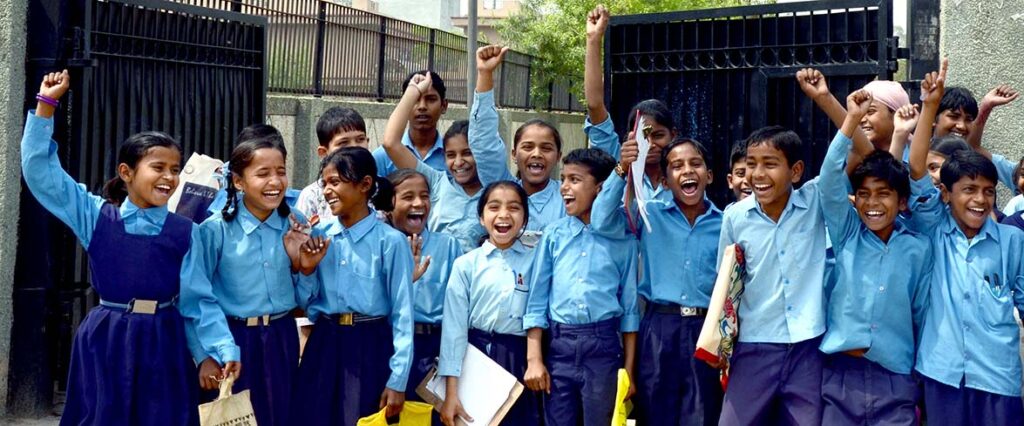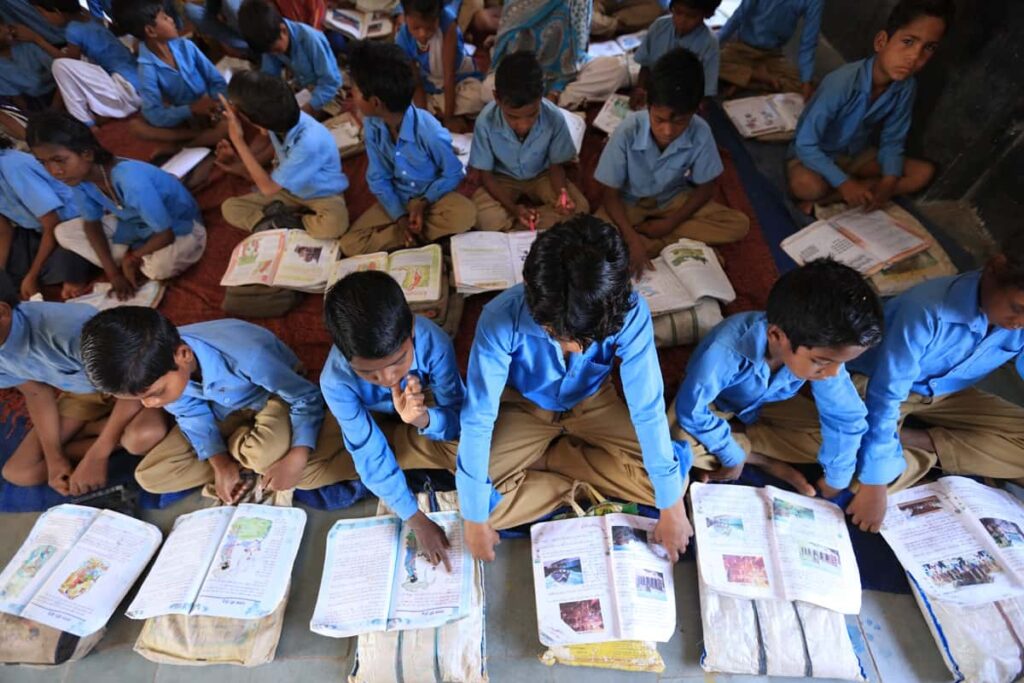
National Education Day: The Need for Comprehensive Education in Child Welfare
What is National Education Day?National Education Day is an annual observance in India, commemorating the birth anniversary of Maulana Abul K....
Read MoreDriven by innovation and technology, a strong foundation in STEM education is becoming increasingly important. This is because the approach to study is not just about memorising formulas or complex scientific theories. STEM education equips children with the critical thinking, collaborative skills, and problem-solving abilities required to succeed in a future driven by innovation.
Imagine classrooms where students aren’t just passive learners but active participants in building robots, designing eco-friendly houses, or conducting exciting science experiments. From fostering creativity and problem-solving to preparing them for future careers, STEM education offers multiple benefits that can help children thrive in a rapidly changing world.
Let’s get deeper into what is STEM education, the many advantages STEM education offers our young learners and how CRY India helps children in rural areas get this quality education.

STEM education, which includes Science, Technology, Engineering, and Mathematics, transcends the traditional boundaries of these subjects. It’s a dynamic approach to learning that fosters a passion for discovery and problem-solving in young minds.
For example, students could investigate the effects of pollution on local water sources (science), utilise data analysis software to assess water quality data (technology), develop water filtration systems (engineering), and compute environmental implications (mathematics).
One of the key strengths of STEM education for children lies in its ability to bridge the gap between theory and practice. Through engaging activities like robotics workshops, students actively apply engineering principles to design, create, and program robots, gaining invaluable experience in problem-solving and collaboration. Similarly, science experiments that span multiple disciplines encourage students to analyse data, devise solutions, and understand the interconnectedness of various fields.
Beyond the classroom, STEM education is crucial in shaping the future workforce. As the demand for STEM-related careers rises, equipping students with the necessary skills and mindset becomes imperative.
By cultivating a passion for these disciplines from an early age, STEM education prepares students for successful careers. It inspires them to become agents of positive change, contributing to advancing science, technology, and society.
Also Read: Education In Rural India: Challenges, Opportunities, Initiatives
While progress has been made, the current state of STEM education in India presents a mixed picture, with opportunities and challenges.
The Indian government has taken steps to prioritise STEM education through various policies and initiatives. The National Education Policy (NEP) 2020 aims to swiftly implement its policies across states, laying a robust foundation for diverse curricula and fostering an environment that nurtures creativity, critical thinking, and practical skills (Source: education.gov.in/nep/about-nep, 2020).
By increasing the number of competency-based, analytical, and multiple-choice questions, the education system is moving towards a model that assesses students’ creative and critical thinking abilities, making them industry-ready.
However, substantial gaps in implementation persist. A survey revealed a critical lack of technological infrastructure in schools, with only 18.4% having operational computer labs. Furthermore, over 9% of STEM teacher positions were vacant, translating to thousands of unfilled posts in states like Jharkhand and Assam, where the vacancy rate reached around 25% (Source: asercentre.org, 2022).
These gaps, coupled with outdated teaching methods and resource deficits, particularly in rural areas, pose significant challenges to the widespread adoption of STEM education.
STEM education throws captivating challenges, not just answers. Students are encouraged to think critically and creatively to find solutions. They learn to analyse situations, brainstorm ideas, and collaborate effectively to achieve a common goal.
These problem-solving skills are invaluable in STEM fields and all aspects of life, from tackling academic challenges to navigating everyday complexities. Let’s look at a few more importance of STEM education for children.
Through hands-on activities, experiments, and problem-solving exercises, children are exposed to challenges that stimulate their critical thinking and reasoning abilities. For example, when building a simple circuit or designing a model bridge, children learn to analyse the problem, apply scientific principles, and devise creative solutions. This process strengthens their cognitive skills, including logical reasoning, problem-solving, and decision-making.
The interdisciplinary nature of STEM encourages students to make connections between different fields, fostering a deeper understanding of concepts. For instance, when learning about the life cycle of a plant, students can apply mathematical concepts to analyse growth patterns, use technology to create simulations, and design engineering models to optimise plant growth conditions. This integrated approach reinforces learning and improves overall academic performance.
By introducing children to STEM education at an early age, they develop a strong foundation and develop interests that can guide their future career choices. Fields such as robotics, artificial intelligence, biotechnology, and renewable energy are a few examples of the numerous career opportunities available to those with STEM skills.
STEM education is crucial in developing essential transferable skills across various domains. For starters, collaboration and teamwork are fostered through group projects and activities, where children learn to communicate and share ideas effectively.
Additionally, STEM education encourages creativity and innovation, as children are challenged to think outside the box and develop unique solutions to problems. For example, in a robotics workshop, children may need to design and program a robot to navigate an obstacle course, requiring them to exercise their creativity and problem-solving skills.
Moreover, STEM education promotes perseverance and resilience. Experiments and projects may not always yield the desired results, but children learn to think of failure as a learning opportunity and successfully navigate challenges.
While the promise of STEM education for India’s children is undeniable, translating that promise into reality presents a unique set of challenges. Unlike their developed counterparts, Indian schools often face hurdles in implementing effective STEM programs. Here are four common challenges that need to be addressed to implement STEM education for children in India effectively:
Many educational institutions struggle to develop and implement curriculums that align with the rapidly evolving demands of the STEM fields. There is a need for a comprehensive and up-to-date curriculum that covers theoretical concepts and emphasises practical applications, hands-on learning experiences, and real-world problem-solving scenarios. Striking the right balance between theory and practical skills remains a hurdle for many schools and educators.
STEM education's success heavily relies on teachers' expertise and competence. However, India faces a shortage of well-trained and qualified STEM educators, particularly in rural and remote areas. Many teachers lack the necessary training and exposure to modern pedagogical approaches, cutting-edge technologies, and innovative teaching methodologies specific to STEM subjects.
Many schools, especially in rural and underprivileged areas, lack access to adequate laboratory facilities, modern equipment, and technological tools essential for hands-on learning experiences. Limited computer access, internet connectivity, and other digital resources further hinder technology integration into STEM education.
Children from underprivileged backgrounds or families with limited financial resources may struggle to access quality STEM education. Additionally, cultural and societal perceptions about gender roles and career choices can discourage girls from pursuing STEM subjects, further exacerbating the gender inequality in these fields.
CRY India, one of the leading NGOs in India, has been tirelessly working to ensure that every child—irrespective of their socio-economic background—has access to quality education. With a special focus on rural areas, the NGO for child education has been breaking barriers and creating an environment that fosters learning and growth.
Through community-based initiatives, we at CRY India actively engage with local stakeholders, parents, and teachers to promote the importance of right to education. We conduct awareness campaigns, identify out-of-school children, and facilitate their school enrollment. Additionally, CRY India establishes academic support centers where children receive guidance and assistance to continue their education, ensuring a smooth transition from one level to the next.
CRY India’s efforts extend beyond just providing access to education. We advocate for policy changes and work closely with the government to ensure children receive their entitled benefits and resources. This includes access to mid-day meals, textbooks, and other essential educational materials.
In India, the importance of STEM education for children cannot be overstated. It provides students with the tools they need to navigate an increasingly technological environment while encouraging innovation and critical thinking, which are vital for future success. STEM education not only enhances students' academic abilities but also prepares them to be responsible, active citizens who can significantly contribute to India’s global advancement.
The aim of STEM education is to equip students with critical thinking, problem-solving, and analytical skills through the integrated study of science, technology, engineering, and mathematics. It seeks to foster a deep understanding of these disciplines, promoting innovation and preparing students to tackle real-world challenges.
STEM education prepares children for future careers by developing essential skills such as critical thinking, creativity, collaboration, and technological proficiency. By engaging in hands-on, experiential learning, students gain practical knowledge and experience, making them well-suited for careers in various fields including technology, engineering, healthcare, and research.
NGOs play a crucial role in STEM education by providing resources, training, and opportunities to underserved communities. They bridge gaps in access to quality education by organizing workshops, providing scholarships, and creating programs that inspire and support students in pursuing STEM fields, thereby promoting educational equity and workforce diversity.